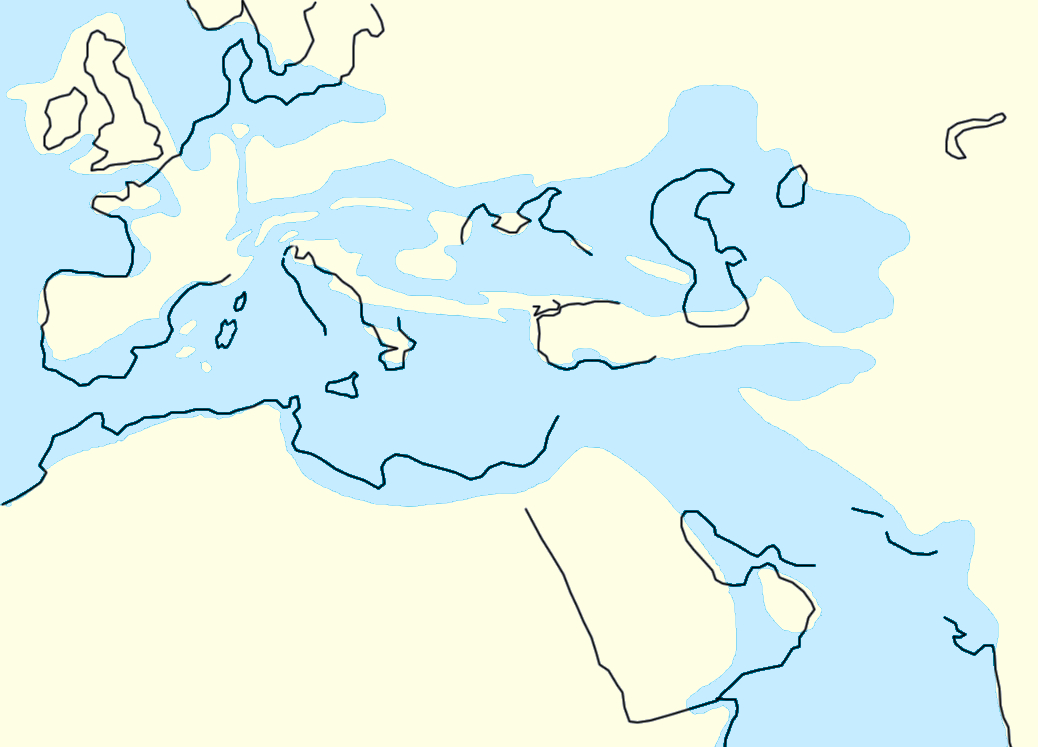|
Cornetfish
The cornetfishes or flutemouths are a small family, the Fistulariidae, of extremely elongated fishes in the order Syngnathiformes. The family consists of a single genus, ''Fistularia'', with four species, found worldwide in tropical and subtropical marine environments. Ranging up to in length, cornetfishes are as thin and elongated as many eels, but are distinguished by very long snouts, distinct dorsal and anal fins, and forked caudal fins whose center rays form a lengthy filament. The lateral line is well-developed and extends onto the caudal filament. They generally live in coastal waters or on coral reefs, where they feed on small fishes, crustaceans, and other invertebrates. Cornetfish are of minor interest for fishing, and can be found in local markets within their range. Species Currently, four recognized species are placed in this genus: * '' Fistularia commersonii'' Rüppell, 1838 (blue-spotted or smooth cornetfish) * '' Fistularia corneta'' C. H. Gilbert & Stark ... [...More Info...] [...Related Items...] OR: [Wikipedia] [Google] [Baidu] |
Fistularia Tabacaria
''Fistularia tabacaria'', the cornetfish, blue-spotted cornetfish, tobacco trumpetfish or unarmed trumpetfish, is a species of cornetfish found along the Atlantic coasts of the Americas and in the central Atlantic off West Africa and the Macaronesian Islands. This species is of minor importance in commercial fisheries. Description This species grows to in total length, though most only reach . The cornetfish is easily mistaken for the needlefish; the defining characteristic that separates the two is the cornetfish's smaller mouth and jaws with an elongated face in comparison to the needlefish's elongated jaw and mouth. The cornetfish is greenish-brown dorsally with overall pale blue spots and lines. Biology ''Fistularia tabacaria'' is most frequently recorded in and over seagrass beds and coral reefs, although it also occurs over hard, rocky substrates. It is usually a solitary species that is very rarely seen in groups. It feeds mainly on small crustaceans and small fish. ... [...More Info...] [...Related Items...] OR: [Wikipedia] [Google] [Baidu] |
Fistularia Corneta
''Fistularia corneta'', commonly known as the Pacific cornetfish or the deepwater cornetfish, is a marine fish in the family Fistulariidae. It is endemic to the eastern Pacific Ocean, being found from California to Peru, including many offshore islands. Adult fish are found deeper than and have been observed to grow longer than , but are more commonly around long.Fritzsche, R.A. and M. Schneider, 1995. Fistulariidae. Cornetas. p. 1104-1105. In W. Fischer, F. Krupp, W. Schneider, C. Sommer, K.E. Carpenter and V. Niem (eds.) Guia FAO para Identification de Especies para lo Fines de la Pesca. Pacifico Centro-Oriental. 3 Vols. FAO, Rome ''F. corneta'' feeds on small fishes, and itself is most commonly used by humans as processed fishmeal, which can be marketed as fresh, salted or dried. It is an oviparous Oviparous animals are animals that lay their eggs, with little or no other embryonic development within the mother. This is the reproductive method of most fish, amphibians, ... [...More Info...] [...Related Items...] OR: [Wikipedia] [Google] [Baidu] |
Syngnathiformes
The Syngnathiformes are an order of ray-finned fishes that includes the trumpetfishes and seahorses.FishBase (2005)Order Summary for Syngnathiformes Version of 2005-FEB-15. Retrieved 19 Aug 2008. These fishes have elongated, narrow, bodies surrounded by a series of bony rings, and small, tubular mouths. The shape of their mouth—in at least syngnathids—allows for the ingestion of prey at close range via suction. Several groups of Syngnathiformes live among seaweed and swim with their bodies aligned vertically, to blend in with the stems. The most defining characteristic of this order is their reverse sexual system. In this order, males conduct in specialized brooding and rearing of the embryos. The males house eggs in an osmoregulated pouch or adhere eggs to their tail until the eggs reach maturity. The name Syngnathiformes means "conjoined-jaws". It is derived from Ancient Greek ''syn'' (συν, "together") + ''gnathos'' (γνάθος, "jaw"). The ending for fish orders "- ... [...More Info...] [...Related Items...] OR: [Wikipedia] [Google] [Baidu] |
10th Edition Of Systema Naturae
The 10th edition of ''Systema Naturae'' is a book written by Swedish naturalist Carl Linnaeus and published in two volumes in 1758 and 1759, which marks the starting point of zoological nomenclature. In it, Linnaeus introduced binomial nomenclature for animals, something he had already done for plants in his 1753 publication of ''Species Plantarum''. Starting point Before 1758, most biological catalogues had used polynomial names for the taxa included, including earlier editions of ''Systema Naturae''. The first work to consistently apply binomial nomenclature across the animal kingdom was the 10th edition of ''Systema Naturae''. The International Commission on Zoological Nomenclature therefore chose 1 January 1758 as the "starting point" for zoological nomenclature, and asserted that the 10th edition of ''Systema Naturae'' was to be treated as if published on that date. Names published before that date are unavailable, even if they would otherwise satisfy the rules. The onl ... [...More Info...] [...Related Items...] OR: [Wikipedia] [Google] [Baidu] |
Oligocene
The Oligocene ( ) is a geologic epoch of the Paleogene Period and extends from about 33.9 million to 23 million years before the present ( to ). As with other older geologic periods, the rock beds that define the epoch are well identified but the exact dates of the start and end of the epoch are slightly uncertain. The name Oligocene was coined in 1854 by the German paleontologist Heinrich Ernst Beyrich from his studies of marine beds in Belgium and Germany. The name comes from the Ancient Greek (''olígos'', "few") and (''kainós'', "new"), and refers to the sparsity of extant forms of molluscs. The Oligocene is preceded by the Eocene Epoch and is followed by the Miocene The Miocene ( ) is the first geological epoch of the Neogene Period and extends from about (Ma). The Miocene was named by Scottish geologist Charles Lyell; the name comes from the Greek words (', "less") and (', "new") and means "less recent" ... Epoch. The Oligocene is the third and final epoch of ... [...More Info...] [...Related Items...] OR: [Wikipedia] [Google] [Baidu] |
Fishing
Fishing is the activity of trying to catch fish. Fish are often caught as wildlife from the natural environment, but may also be caught from stocked bodies of water such as ponds, canals, park wetlands and reservoirs. Fishing techniques include hand-gathering, spearing, netting, angling, shooting and trapping, as well as more destructive and often illegal techniques such as electrocution, blasting and poisoning. The term fishing broadly includes catching aquatic animals other than fish, such as crustaceans (shrimp/lobsters/ crabs), shellfish, cephalopods (octopus/squid) and echinoderms (starfish/sea urchins). The term is not normally applied to harvesting fish raised in controlled cultivations ( fish farming). Nor is it normally applied to hunting aquatic mammals, where terms like whaling and sealing are used instead. Fishing has been an important part of human culture since hunter-gatherer times, and is one of the few food production activities that ha ... [...More Info...] [...Related Items...] OR: [Wikipedia] [Google] [Baidu] |
Extant Rupelian First Appearances
{{disambig ...
Extant is the opposite of the word extinct. It may refer to: * Extant hereditary titles * Extant literature, surviving literature, such as ''Beowulf'', the oldest extant manuscript written in English * Extant taxon, a taxon which is not extinct, such as an extant species * Extant Theatre Company, a disability arts organisation * ''Extant'' (TV series), an American television series * Hank Hall, also known as Extant, a DC Comics supervillain See also * Extent (other) Extent may refer to: Computing * Extent (file systems), a contiguous region of computer storage medium reserved for a file * Extent File System, a discontinued file system implementation named after the contiguous region * Extent, a chunk of st ... [...More Info...] [...Related Items...] OR: [Wikipedia] [Google] [Baidu] |
Bernard Germain Étienne De La Ville, Comte De Lacépède
Bernard ('' Bernhard'') is a French and West Germanic masculine given name. It is also a surname. The name is attested from at least the 9th century. West Germanic ''Bernhard'' is composed from the two elements ''bern'' "bear" and ''hard'' "brave, hardy". Its native Old English reflex was ''Beornheard'', which was replaced by the French form ''Bernard'' that was brought to England after the Norman Conquest. The name ''Bernhard'' was notably popular among Old Frisian speakers. Its wider use was popularized due to Saint Bernhard of Clairvaux (canonized in 1174). Bernard is the second most common surname in France. Geographical distribution As of 2014, 42.2% of all known bearers of the surname ''Bernard'' were residents of France (frequency 1:392), 12.5% of the United States (1:7,203), 7.0% of Haiti (1:382), 6.6% of Tanzania (1:1,961), 4.8% of Canada (1:1,896), 3.6% of Nigeria (1:12,221), 2.7% of Burundi (1:894), 1.9% of Belgium (1:1,500), 1.6% of Rwanda (1:1,745), 1.2% of Germany ... [...More Info...] [...Related Items...] OR: [Wikipedia] [Google] [Baidu] |
Edwin Chapin Starks
Edwin Chapin Starks (born in Baraboo, Wisconsin on January 25, 1867; died December 29, 1932) was an ichthyologist most associated with Stanford University. He was known as an authority on the osteology Osteology () is the scientific study of bones, practised by osteologists. A subdiscipline of anatomy, anthropology, and paleontology, osteology is the detailed study of the structure of bones, skeletal elements, teeth, microbone morphology (biolo ... of fish. He also did studies of fish of the Puget Sound. His wife and daughter were also both involved in either science or natural history. See also * :Taxa named by Edwin Chapin Starks References {{DEFAULTSORT:Starks, Edwin Chapin American ichthyologists Stanford University Department of Biology faculty Stanford University alumni 1867 births 1932 deaths People from Baraboo, Wisconsin ... [...More Info...] [...Related Items...] OR: [Wikipedia] [Google] [Baidu] |
Charles Henry Gilbert
Charles Henry Gilbert (December 5, 1859 in Rockford, Illinois – April 20, 1928 in Palo Alto, California) was a pioneer ichthyologist and fishery biologist of particular significance to natural history of the western United States. He collected and studied fishes from Central America north to Alaska and described many new species. Later he became an expert on Pacific salmon and was a noted conservationist of the Pacific Northwest. He is considered by many as the intellectual founder of American fisheries biology. He was one of the 22 "pioneer professors" (founding faculty) of Stanford University. Early life and education Born in Rockford, Illinois, Gilbert spent his early years in Indianapolis, Indiana, where he came under the influence of his high school teacher, David Starr Jordan (1851‒1931). When Jordan became Professor of Natural History at Butler University in Indianapolis, Gilbert followed and received his B.A. degree in 1879. Jordan moved to Indiana University, ... [...More Info...] [...Related Items...] OR: [Wikipedia] [Google] [Baidu] |


